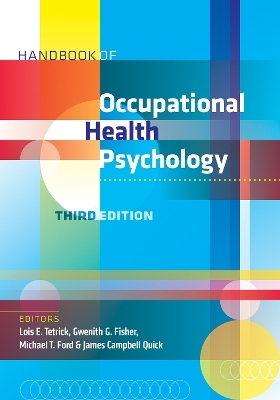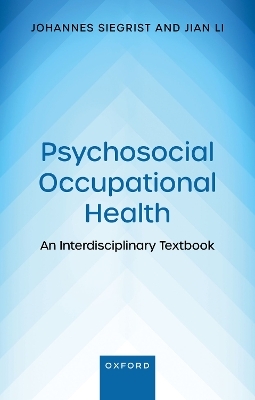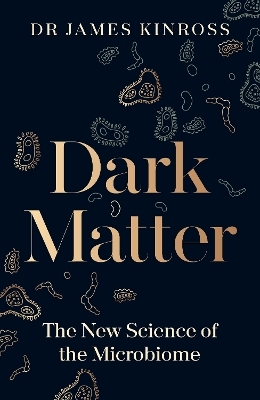
Environmental Chemistry in the Lab
CRC Press (Verlag)
978-0-367-43937-8 (ISBN)
Environmental Chemistry in the Lab presents a comprehensive approach to modern environmental chemistry laboratory instruction, together with a complete experimental experience. The laboratory experiments have an introduction for the students to read, a pre-lab for them to complete before coming to the lab, a data sheet to complete during the lab, and a post-lab which would give them an opportunity to reinforce their understanding of the experiment completed. Instructor resources include a list of all equipment and supplies needed for 24 students, a lab preparation guide, an answer key to all pre-lab and post-lab questions, sample data for remote learners, and a suggested rubric for grading the labs.
Additional features include:
• Tested laboratory exercises with instructor resources for environmental science students
• Environmental calculations, industrial regulation, and environmental stewardship
• Classroom and remote exercises
• An excellent, user-friendly, and thought-provoking presentation which will appeal to students with little or no science background
• A qualitative approach to the chemistry behind many of our environmental issues today
Ruth Ann Murphy, PhD, earned a BS in chemistry and a PhD in physical chemistry from the University of Texas at Austin with additional graduate studies at the University of Wisconsin- Madison. After teaching appointments in chemistry at Southwestern University, Georgetown, Texas, and the University of New Mexico, Albuquerque, she served as chemistry coordinator and assistant professor at the University of Albuquerque. As professor of chemistry, she then chaired the Division of Science and Math at Howard Payne University, Brownwood, Texas. Since 1995 Dr. Murphy has taught at the University of Mary Hardin-Baylor in Belton, Texas, where she chairs the Department of Chemistry, Environmental Science, and Geology, holds the Amy LeVesconte Professorship of Chemistry, directs the Recycling Program, co-chairs the Health Professions Advisory Committee, and is Principal Investigator for the Robert A. Welch Foundation research grant. She has served as president of the Texas Association of Advisors for the Health Professions, and is a member of the American Chemical Society including the Divisions of Chemical Education, Chemical Health and Safety, and Fluorine Chemistry. She is the co-author with Dr. James M. Beard of the Third Edition of Environmental Chemistry in Society, Third Edition, CRC Press, Taylor & Francis Group, Boca Raton, FL 2022. Dr. Murphy enjoys making chemistry relevant to her students by including environmental and other examples from daily life in her courses.
Preface
Acknowledgments
Author
Safety
UNIT A. Introductory Exercises
Exercise 1. Safety in the Environmental Chemistry Lab (1.25 hours)
Exercise 2. Ethics in the Environmental Chemistry Lab – (0.75 hour)
Exercise 3. The Notebook in the Environmental Chemistry Lab (0.75 hour)
Exercise 4. Introduction to Glassware in the Environmental Chemistry Lab (1.5 hours)
Exercise 5. Exploring the Metric System (1.75 hours)
Exercise 6. Mastering the Metric System (1.75 hours)
Exercise 7. Parts Per Million (ppm) and Other Tiny Quantities
Exercise 8. Big and Small Numbers – Scientific Notation r (0.75 hour)
Exercise 9. Temperature and Heat – What’s the Difference? (1.75 hours)
Exercise 10. Some Elements of Matcha Mole’s Adventure in Environmental Chemistry Land (0.75 hour)
Exercise 11. Environmental Chemical Reactions - Balancing Equations (1.5 hours)
UNIT B. Adventures in the Environmental Chemistry Lab
Exercise 12. Measurement – A Foundation of Environmental Chemistry (1.5 hours)
Exercise 13. Why Do Icebergs Float on Water? A Study of Density (1.5 hours)
Exercise 14. Metals and Alloys – What’s the Difference? (2 hours)
Exercise 15. Recycling Copper – Observing Types of Reactions (2 hours)
Exercise 16. Studying Evaporation by Preparing "Canned Heat" (2 hours)
Exercise 17. Can We Get Energy from Acid-Base Reactions? Exploring Thermochemistry (2 hours)
Exercise 18. Are Electrolytes Changing Our Waters? Identifying Electrolytes by Conductivity Measurements (1.25 hours)
Exercise 19. Radiation, An Invisible Pollutant – Measurements and Calculations (0.75 hour)
Exercise 20. Is Extra Low Frequency (ELF) Radiation Harmful? A Laboratory Analysis (1 hour)
Exercise 21. Adventures in Organic Chemistry Land (1.5 hours)
Exercise 22. What’s in Red Cabbage? Adventures in pH Land (2 hours)
Exercise 23. The Process of Extraction - Measuring Caffeine in Tea Bags (1. 75 hours)
Exercise 24. Soap or Detergent, which is Better? Preparing Soap (2 hours)
Exercise 25. What’s in My Detergent? Measuring Phosphate with Spectroscopy (2 hours)
Exercise 26. What’s in Water Besides H2O? A Laboratory Analysis (1.75 hours)
Exercise 27. Purifying Cloudy Water - A Treatment Process (1.75 hours)
Exercise 28. Is This Air Okay to Breathe? A Laboratory Analysis (2 hours)
Exercise 29. What Are Plastics, Anyway? A Study of Polymers (1.75 hours)
Exercise 30. Should I Bother with Recycling? Separation of Plastics by Density (2 hours)
Exercise 31. What Is Illegal about Pollution? An Environmental Law Presentation (1.75 hours)
Exercise 32. A Soldier’s Perspective on Environmental Stewardship (1.5 hours)
| Erscheinungsdatum | 29.06.2022 |
|---|---|
| Zusatzinfo | 23 Tables, black and white; 7 Line drawings, color; 3 Line drawings, black and white; 86 Halftones, color; 93 Illustrations, color; 3 Illustrations, black and white |
| Verlagsort | London |
| Sprache | englisch |
| Maße | 156 x 234 mm |
| Gewicht | 639 g |
| Themenwelt | Medizin / Pharmazie ► Medizinische Fachgebiete ► Arbeits- / Sozial- / Umweltmedizin |
| Studium ► Querschnittsbereiche ► Klinische Umweltmedizin | |
| Naturwissenschaften ► Biologie ► Ökologie / Naturschutz | |
| Naturwissenschaften ► Chemie | |
| Technik ► Umwelttechnik / Biotechnologie | |
| Weitere Fachgebiete ► Land- / Forstwirtschaft / Fischerei | |
| ISBN-10 | 0-367-43937-9 / 0367439379 |
| ISBN-13 | 978-0-367-43937-8 / 9780367439378 |
| Zustand | Neuware |
| Haben Sie eine Frage zum Produkt? |
aus dem Bereich


